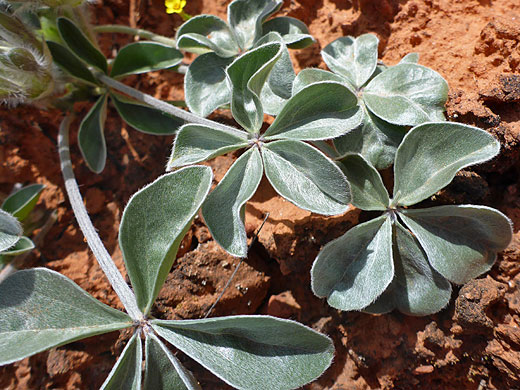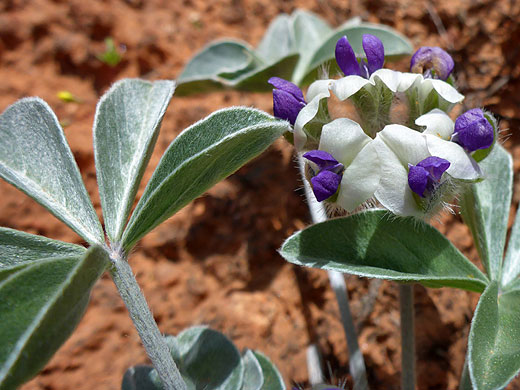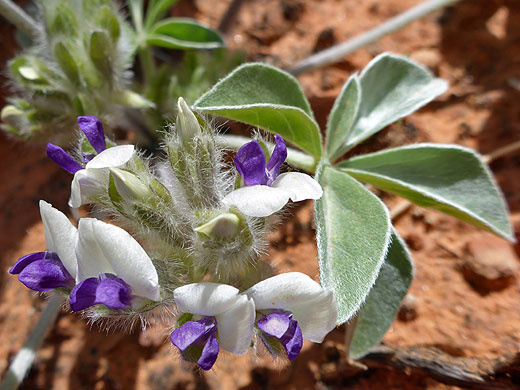Pediomelum Megalanthum, Intermountain Indian Breadroot
Plants > Wildflowers > Fabaceae > Pediomelum Megalanthum

White and purple petals, and hairy calyces; pediomelum megalanthum along the Courthouse Butte Trail, Sedona, Arizona
Common name:
Intermountain indian breadroot
Family:
Scientific name:
Pediomelum megalanthum
Main flower color:
Range:
Arizona, Utah and south Nevada; small areas of Colorado and New Mexico
Height:
Up to 4 inches
Habitat:
Scrubland, hillsides, sagebrush flats
Leaves:
Palmate, with 5 or 6 broad, hairy, obovate leaflets
Season:
February to May
Leaves of pediomelum megalanthum appear greyish green due to an even covering of thin, appressed, silvery hairs. Plants are low-growing perennials, nearly stemless; leaf stalks and flower spikes emerge from near ground level. Leaves have petioles several inches long, and 5 or 6 leaflets, which are widest above the middle, rounded and/or notched at the tip, and tapering at the base. Leaf surfaces are dotted with tiny glands. Small stipules grow at the base of the leaf stalks. Leaves tend to form a basal rosette.
The inflorescence is a dense, spherical cluster of flowers and hairy bracts. Flowers have a large white banner petal, and bluish-purple (whitish at the base) wing and keel petals. The flower center contains ten stamens, nine with fused filaments, the other free.
There are two varieties of pediomelum megalanthum (var retrorsum and var megalanthum), differing in aspects of the stem and leaf hairs, and the shape of the calyx lobes.
The inflorescence is a dense, spherical cluster of flowers and hairy bracts. Flowers have a large white banner petal, and bluish-purple (whitish at the base) wing and keel petals. The flower center contains ten stamens, nine with fused filaments, the other free.
There are two varieties of pediomelum megalanthum (var retrorsum and var megalanthum), differing in aspects of the stem and leaf hairs, and the shape of the calyx lobes.
All Contents © Copyright The American Southwest | Comments and Questions | Contribute | Site Map



